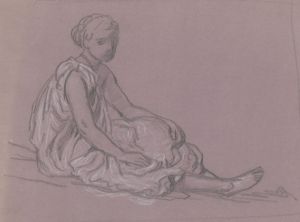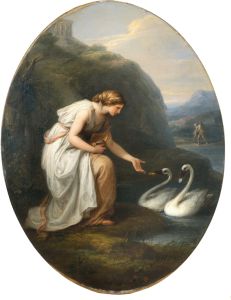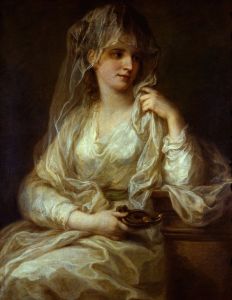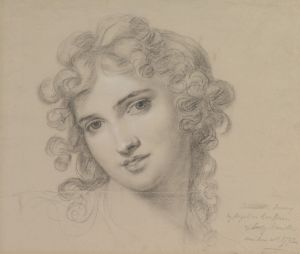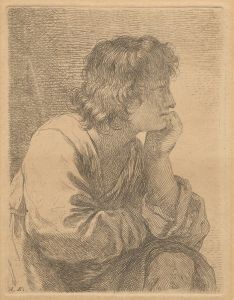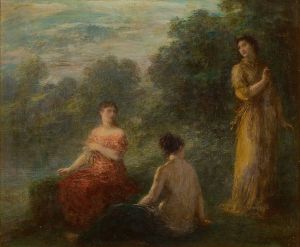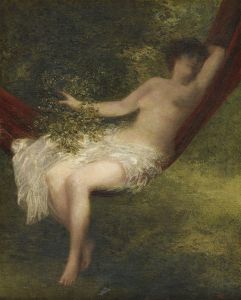
Diana and her nymphs bathing
A hand-painted replica of Angelica Kauffmann’s masterpiece Diana and her nymphs bathing, meticulously crafted by professional artists to capture the true essence of the original. Each piece is created with museum-quality canvas and rare mineral pigments, carefully painted by experienced artists with delicate brushstrokes and rich, layered colors to perfectly recreate the texture of the original artwork. Unlike machine-printed reproductions, this hand-painted version brings the painting to life, infused with the artist’s emotions and skill in every stroke. Whether for personal collection or home decoration, it instantly elevates the artistic atmosphere of any space.
Angelica Kauffmann's painting "Diana and Her Nymphs Bathing" is a notable work by the Swiss-born Neoclassical painter, who was one of the most prominent female artists of the 18th century. Kauffmann was renowned for her history paintings, portraits, and landscapes, and she played a significant role in the development of Neoclassicism in Europe.
"Diana and Her Nymphs Bathing" depicts the Roman goddess Diana, known in Greek mythology as Artemis, who was the goddess of the hunt, the moon, and nature. She is often portrayed as a virginal and independent deity, surrounded by her nymphs, who are her companions and attendants. The theme of Diana and her nymphs is a popular subject in art, symbolizing purity, nature, and the feminine divine.
In this painting, Kauffmann captures a serene and idyllic scene where Diana and her nymphs are engaged in the act of bathing. The setting is typically a lush, wooded landscape, which is a common backdrop for scenes involving Diana, emphasizing her connection to nature and the wilderness. The figures are depicted with grace and elegance, reflecting Kauffmann's skill in rendering the human form and her attention to classical ideals of beauty.
Kauffmann's use of color and light in "Diana and Her Nymphs Bathing" is characteristic of her style, with soft, harmonious tones that create a sense of tranquility and harmony. The composition is carefully balanced, with the figures arranged in a way that guides the viewer's eye through the scene, creating a sense of movement and interaction among the nymphs and their goddess.
As a female artist in a predominantly male-dominated field, Kauffmann's work often explored themes related to women and their roles in mythology and society. Her portrayal of Diana and her nymphs can be seen as a celebration of feminine strength and camaraderie, as well as a reflection of Kauffmann's own experiences as a successful woman in the arts.
Kauffmann was a founding member of the Royal Academy of Arts in London, and her work was highly regarded by her contemporaries. She was known for her ability to blend classical themes with a modern sensibility, making her paintings accessible and appealing to a wide audience. "Diana and Her Nymphs Bathing" exemplifies her talent for combining mythological subjects with a refined aesthetic that was in line with the tastes of the Enlightenment period.
The painting is a testament to Kauffmann's mastery of the Neoclassical style, which sought to revive the art and culture of ancient Greece and Rome. Her work often incorporated elements of classical architecture, sculpture, and literature, reflecting the intellectual currents of her time.
"Diana and Her Nymphs Bathing" remains an important example of Kauffmann's contribution to the art world and her ability to convey complex themes through her paintings. Her legacy as a pioneering female artist continues to be celebrated, and her works are held in high esteem in museums and collections around the world.







